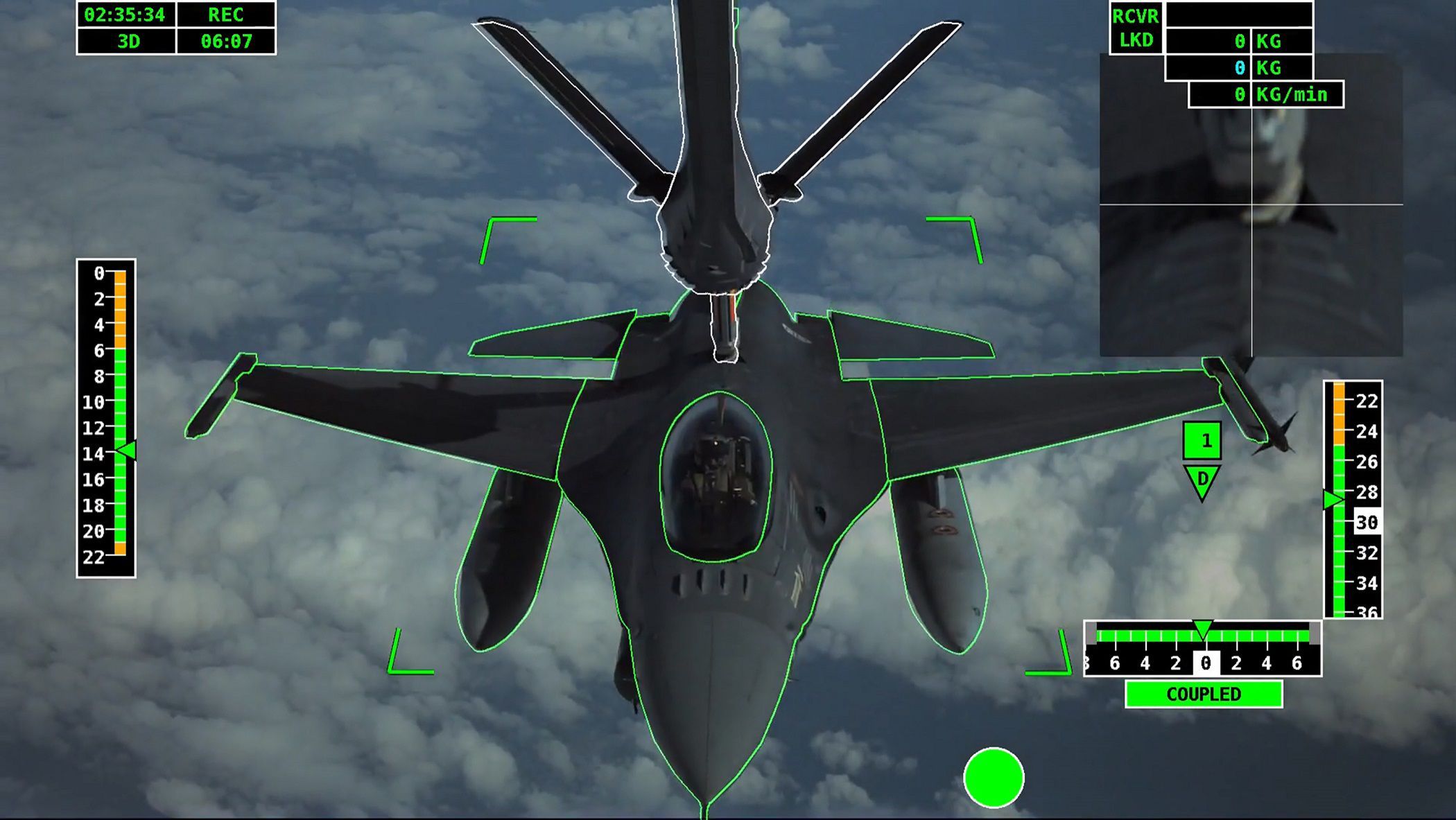Airbus announced on Friday that it has successfully conducted the first-ever fully automated air-to-air refueling (A3R) operation with a boom system. According to the company, its A3R system was flight tested earlier in the year using an Airbus tanker with a Portuguese air force F-16 acting as a receiver. A total of 45 flight test hours and 120 dry contacts were logged during the test campaign.
“Once the system is activated by the ARO [air refueling operator], the A3R flies the boom automatically and keeps the alignment between the boom tip and the receiver receptacle with an accuracy of a couple of centimeters,” said Airbus. “The proper alignment and the receiver stability is checked in real-time to keep a safe distance between the boom and the receiver and also to determine the optimum moment to extend the telescopic beam to achieve the connection with the receiver.”
Airbus says its goal for the A3R system was to “develop technologies that will reach fully autonomous capabilities.” The system, which was designed to reduce air refueling operator workload, improve safety and optimize the rate of air-to-air refueling transfer in operational conditions, does not require additional equipment on the receiver aircraft. Certification testing is expected to begin in 2021.




































Bet the USAF regretting the KC-46 even more now!!!
Peter: regret the KC-46, never. The Boeing will get straightened out. The majority of it’s issues are Boeing management driven. As a guy with a LOT of boom-time in the C-141B, I want a human driving that thing. Humans tend to be somewhat overcautious and in the middle of the ocean, at night, in less than sterling weather that is good. What happens when you really need that gas and the automated system fails? Or the system decides the conditions are outside its’ acceptable envelope? Or, the computer hiccups at the wrong time (and sooner or later, it will)? Did Airbus actually try this thing in extremely marginal conditions before crowing all over the place?
Then, what about the size of the Airbag vs the 767. The Airbag would have NOT fit is the vast majority of the KC-135 facilities. The ramp and taxiways would have required a lot of work. And, the US would have been beholden to France for an extremely important piece of our airpower capability. What happens when France decides we are wrong and shuts off parts and information access until we change our ways? Or shuts off the production line?
Nope, the KC-46 with its’ problems is the far better choice.
>>Did Airbus actually try this thing in extremely marginal conditions before crowing all over the place?
I think news of an initial success is valid. I imagine that expanded envelope testing is still to come. Every test program begins with favorable conditions, and this was a report of a successful first test. If the certification testing begins next year, I would expect that test program to define (and prove) the operational envelope.
Boeing sure as heck didn’t perform the first KC-46 test refueling at night in a thunderstorm.
The article says “reduce the ARO workload” not eliminate it, so the ARO will operate it when NECESSARY.
Isn’t that the way you see it?